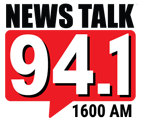The early phases of a Livingston GIS Mapping Project continue to progress.
Magnolia River Director of GIS Allisyn Hudson said they have created two separate GIS maps for the city’s gas lines and its water and wastewater systems. Hudson said they are currently going out and collecting various kinds of data to be recorded and accessible in those digital maps.
“We’re talking about customer meters, valves, hydrants, manholes, anything that is visible to us above ground,” Hudson said. “And we will go and we will take a GPS unit and we will stand near that asset and we will take a collection point. And that point immediately populates into the map.”
Hudson said another benefit of recording the GPS data is that it ensures the city’s meters are in their proper locations. Hudson said the city has workers that know these water and gas systems very well but that information can be lost when they leave unless everything is properly documented.
“They know now this is where our valve is, this is where our customer meter is,” Hudson said. “And when they need maintenance performed on these it creates a lot better operational efficiency. There’s a lot of safety improvements that come along with having this type of information in your GIS.”
Hudson said the next phase of the project is to document the city’s main lines and service lines to allow for further connectivity.
“If you think about a map, even just think about a road atlas, you’ve got your towns, you’ve got your roads that are running between them,” Hudson said. “Well, a water system works very similarly to that. So a point would maybe be a town, the road would be a main line or a service. Right now we’re collecting out points.”
Hudson said this extra information would allow them to visualize the flow of their systems and look for at-risk areas based on factors like the material of a pipe, the substrate it is in, or the date when it was installed.
“There are other things that you can do with these maps for community engagement,” Hudson said. “Creating outward-facing maps that don’t have any proprietary information but they do allow the community to see what is going on.”
 News Talk 94.1/AM 1600 Where The Upper Cumberland Talks
News Talk 94.1/AM 1600 Where The Upper Cumberland Talks







